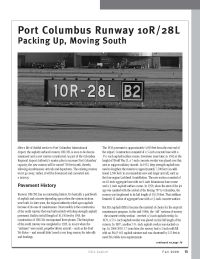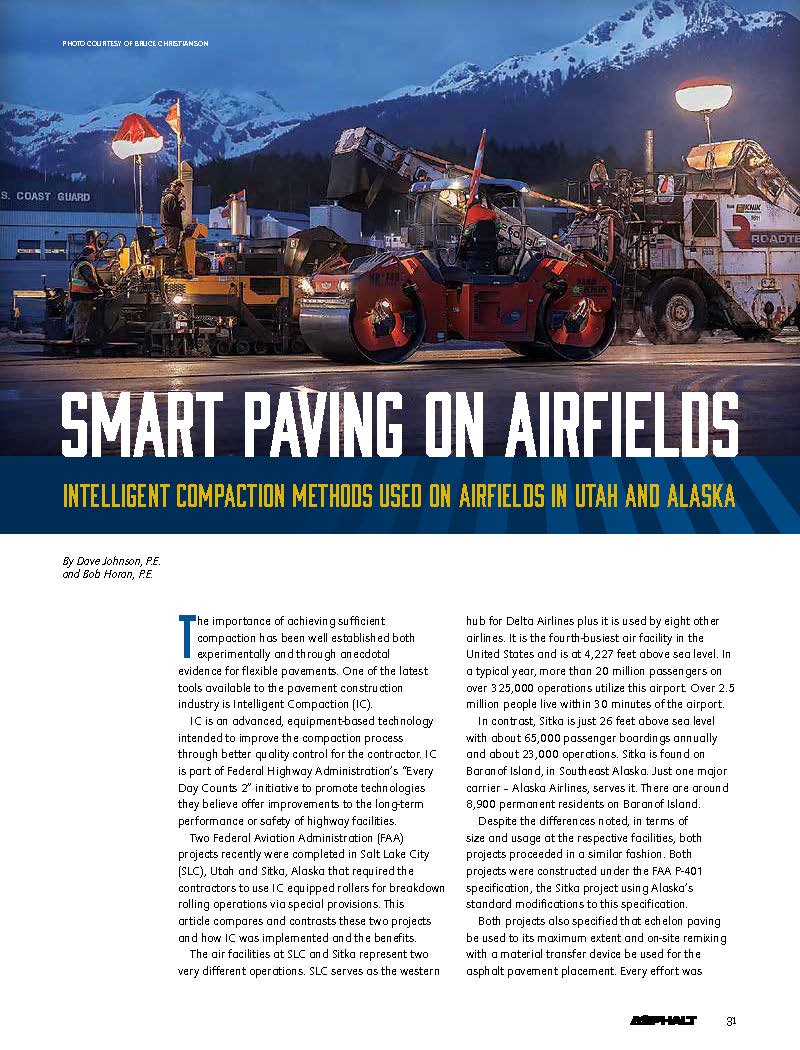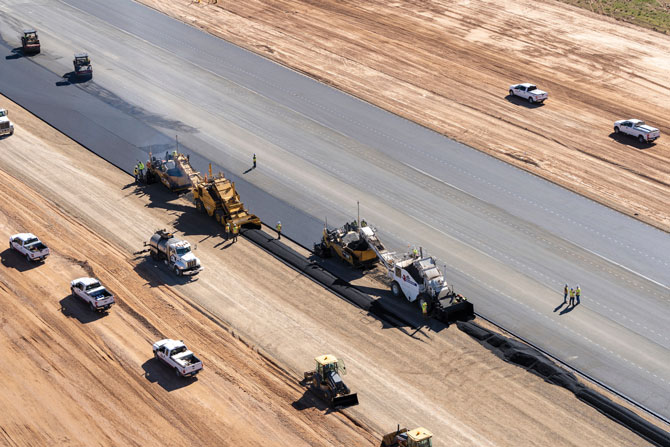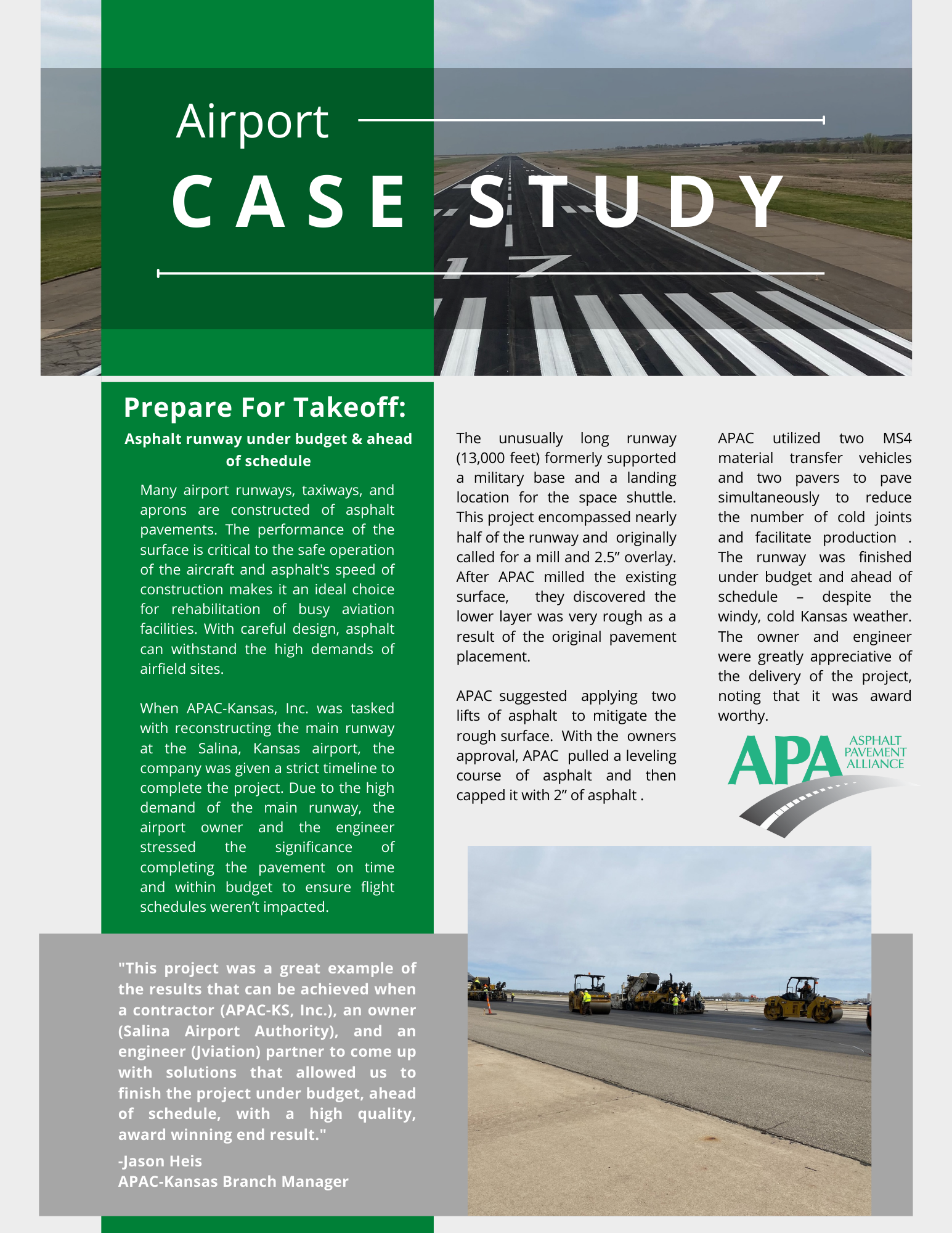.jpg)
Ensuring the Longer Life of Airport Runways
Developing long-life asphalt pavements is a sustainable and cost-effective objective that will help to maximize the nation's return on investment in airport infrastructure.
.jpg)
Developing long-life asphalt pavements is a sustainable and cost-effective objective that will help to maximize the nation's return on investment in airport infrastructure.

Renovating the main runway at Oakland International Airport with asphalt in 14 days, working around the clock (24 hours a day, 7 days a week), and paving in echelon was the best option to avoid interrupting air traffic.

Runway 10R/28L has an interesting history with a first phase of the south runway completed in 1928 and its full length of 10,150 feet completed by 1958. In the early years, it consisted of a patchwork of asphalt and concrete depending upon when the various sections were built. In later years, the Airport Authority relied upon asphalt because of its ease of maintenance, most notably the construction of the north runway that was built entirely with deep-strength asphalt pavement.

Intelligent Compaction Methods were used on airports in Utah and Alaska.

The completed reconstruction of the airport will follow seven phases, starting in March 2020. During the entire reconstruction process, 4,800 feet on the runway have been open at all times. Ryan Marshall, Director of the Public Works Department, says his office is excited about bringing the airport up to specifications because the last reconstruction took place more than 30 years ago. “After the reconstruction is done, we will have an upgraded airport for planes to land and passengers to enjoy. We hope that after the coronavirus, the remodeled Cedar City Airport will become a destination hub for all that we have to offer with the Utah Shakespeare Festival, the Utah Summer Games, our diversified recreational activities, and our proximity to several national parks.”

For the rehabilitation of its primary arrival runway, DFW knew it had to find a solution that would require the shortest amount of downtime, deliver the longest pavement life, require minimal interruption for scheduled maintenance, and maintain its status as a carbon-neutral airport.

Many airport runways, taxiways, and aprons are constructed of asphalt pavements. The performance of the surface is critical to the safe operation of the aircraft and asphalt's speed of construction makes it an ideal choice for rehabilitation of busy aviation facilities. With careful design, asphalt can withstand the high demands of airfield sites.